When effort and good intentions are simply not enough
When a disaster such as the Nepal earthquake strikes, most people want to help. Exactly how to help, is often more difficult. You can give prayers, money, time, goods or effort …all may be useful but goodwill and good intent alone do not necessarily guarantee a good result.
You may pick the wrong God to direct your prayers to… and this could lead to no result, or worse, an angry god.
You may give money to an organisation that removes a sizeable chunk for overheads and administration, leaving only a small amount of the donated funds for the work on the ground.
Your time & effort spent helping on development or reconstruction tasks you are unfamiliar with, may have been better spent plying your usual trade / profession and sending some of your earnings to help in Nepal.
When HH spotted a prototype sand bag house, being built by Nepali uni students and a service club, presented as an example of a new earthquake proof house or emergency shelter (or both?) there were some questions.
- what was the role of the structure was it designed to be a long term housing model or an emergency shelter ?
- what made the structure earthquake proof ?
- where would villagers buy / obtain the sand and rice bags?
- what would the villagers do with all the material on site form their collapsed existing houses – the stone, bricks, timbers, roofing etc ?
- how would the walls be finished ?
- How did the steel roof structure link to the sand bag walls ?
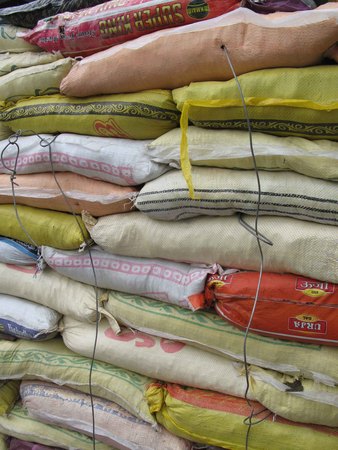
Wire ties help stabilise the walls but will not necessarily ensure earthquake stability. Ho would the walls be secured? How would the bamboo lintels installed over windows and doors in this prototype survive white ant (termite) attack?
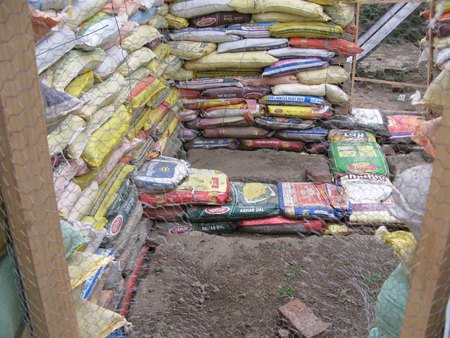
The internal walls of this scaled down proto-type take up a lang area of the floor plan. Over 1500 bags were needed for this scaled down prototype. Would villagers have the resources to find and fill the bags and also provide ferro cement rendering of the inside and outside walls?
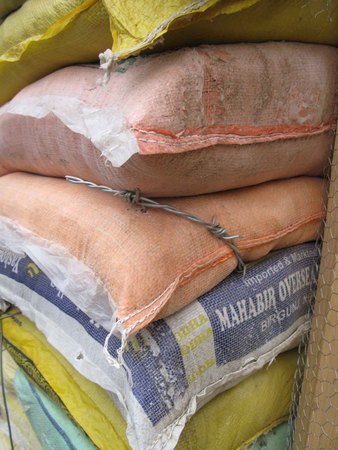
Barbed wire between courses is used to stop slipping of the bags. Note the void area between bags will mean large volumes of ferro – cement mortar would be needed for rendering.
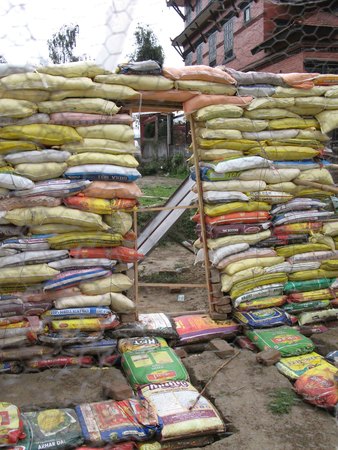
The door frame being crushed by the wall
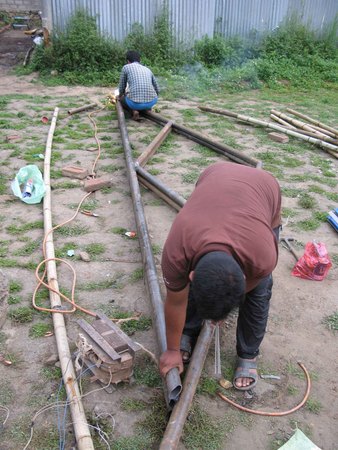
Steel trusses (made of larger than necessary pipe as the small material was not readily available) would carry the roof and be mounted on steel columns separate from the bag structure …the economy of this is questionable.
After all the questions, and considering the answers, HH suggests that all good ideas and intentions, particularly for the poor and those facing life threatening emergencies, should be subjected to a robust review using good design criteria and construction practices and, most importantly, assessment by the proposed beneficiaries – the community members.









